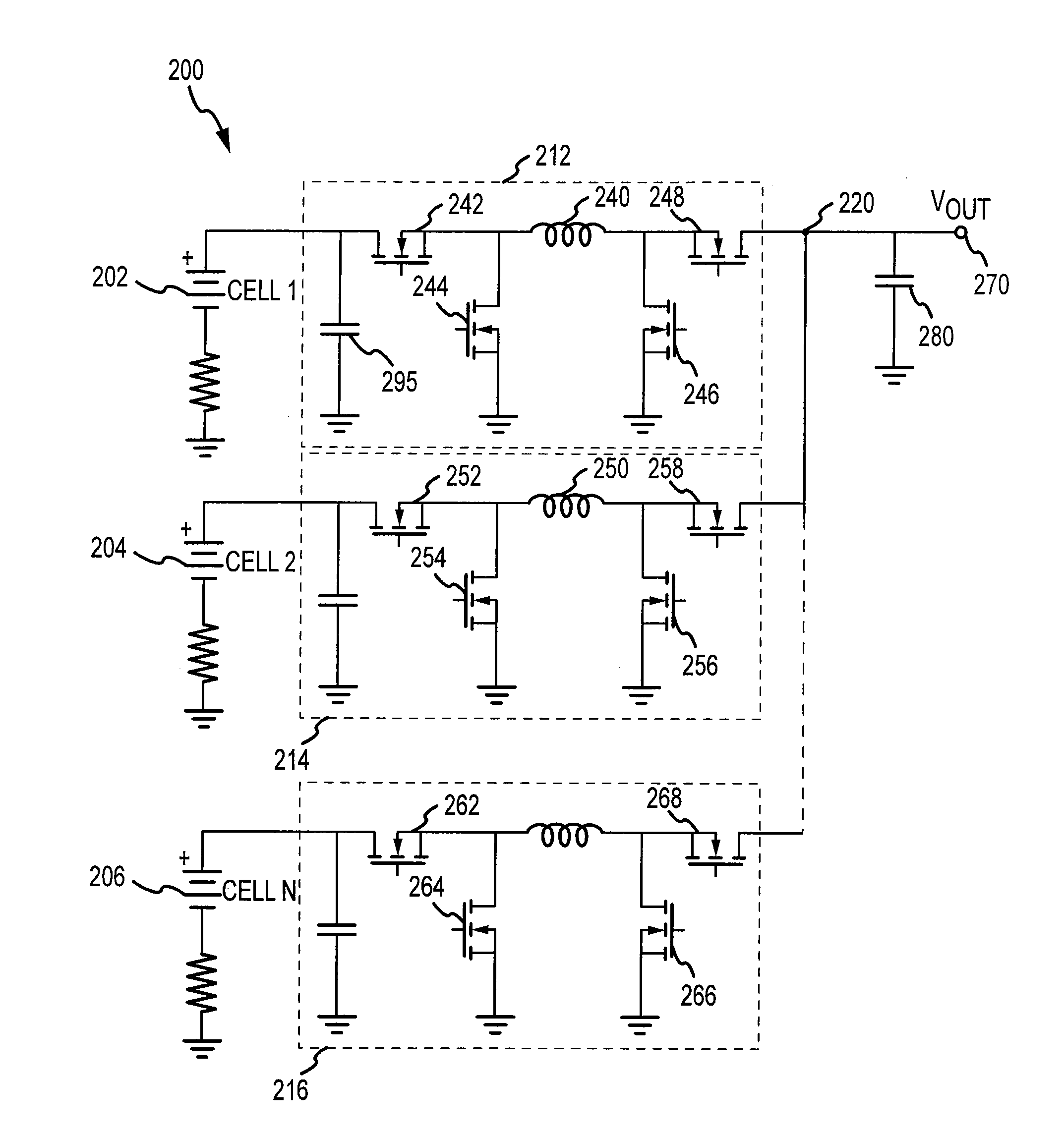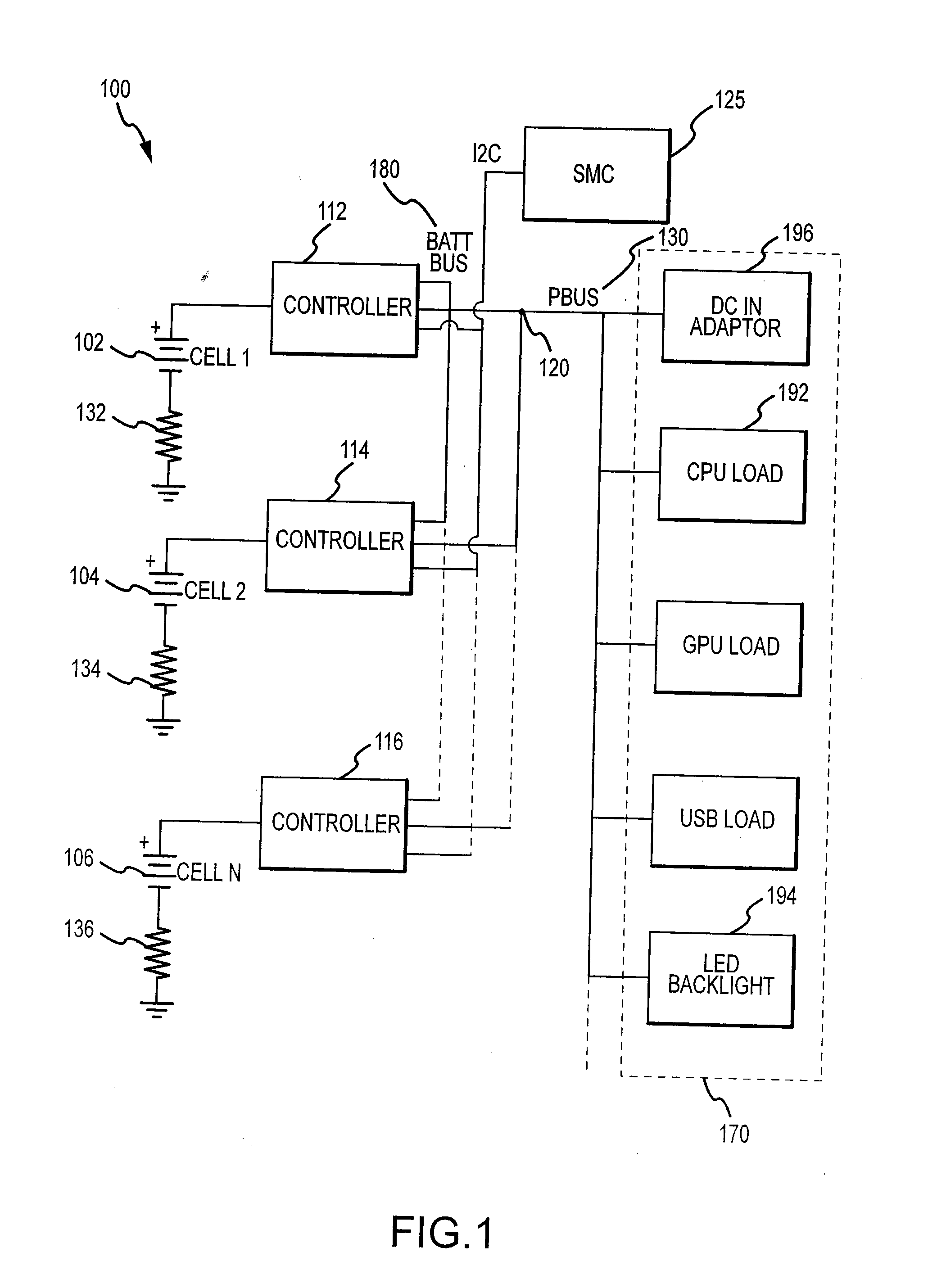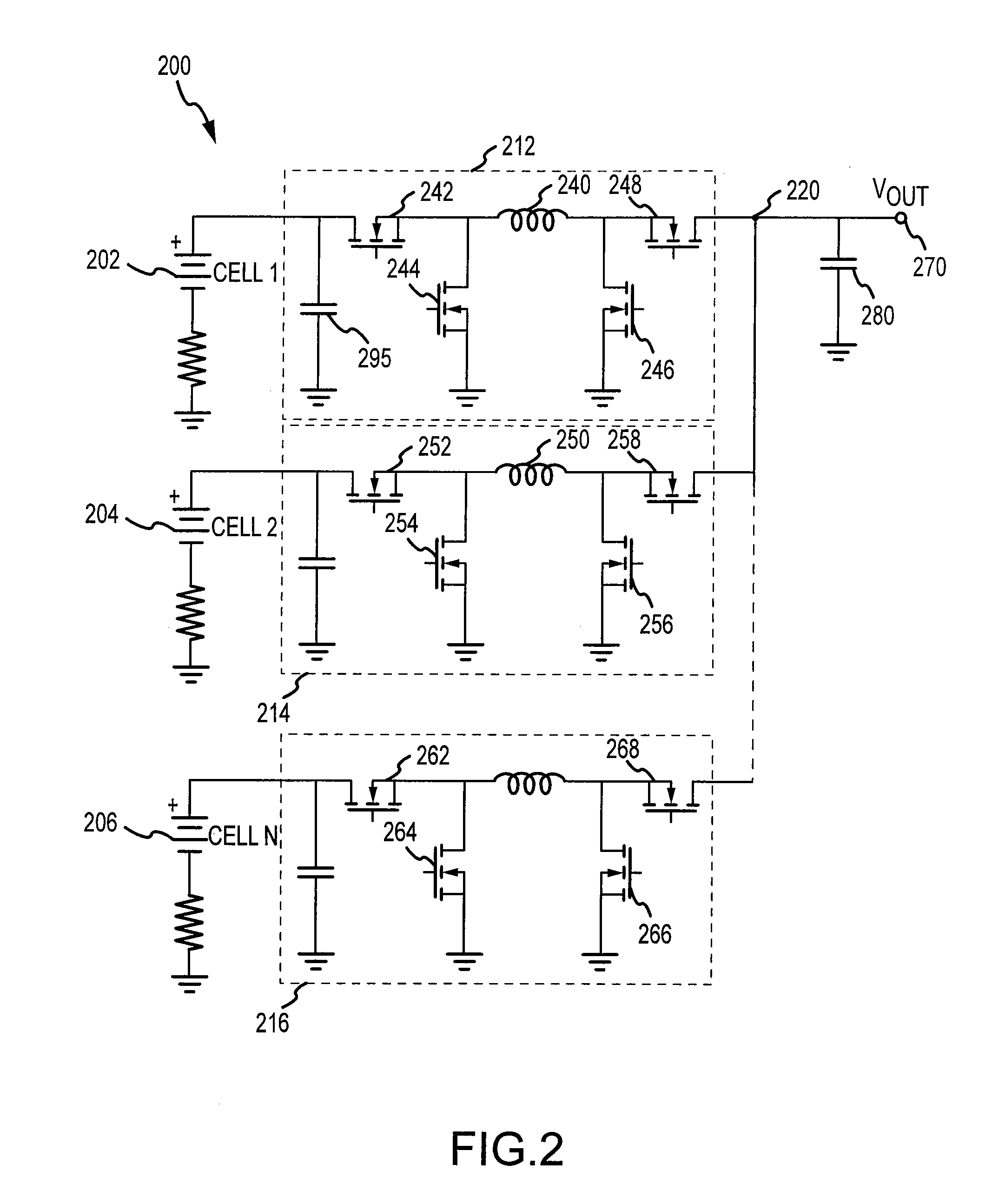Power source having a parallel cell topology
a power source and topology technology, applied in the field of electronic devices, can solve the problems of reducing the capacity of the battery, affecting and only using the technique, so as to eliminate reduce the need for cell balancing, and improve the individual control of the cell
- Summary
- Abstract
- Description
- Claims
- Application Information
AI Technical Summary
Benefits of technology
Problems solved by technology
Method used
Image
Examples
embodiment 100
[0034]In embodiment 100, cells 102, 104, 106 may each be operationally or directly connected to individual dedicated controllers. One exemplary embodiment of a controller will be discussed in more detail with respect to FIG. 3, below. In certain embodiments of the present invention, each controller may be a buck-boost controller. For example, in FIG. 1 cell 102 may have a dedicated buck-boost controller 112, while cell 104 may have a second dedicated buck-boost controller 114 and cell 106 may have a third dedicated buck-boost controller 116. The number of buck-boost controllers in FIG. 1 is not intended as a limitation but merely an example for explanatory purposes. Buck-boost controller 112, buck-boost controller 114 and buck-boost controller 116 may be operationally or directly connected in parallel with one another and each of the buck-boost controllers may be operationally or directly connected to a common node 120. The buck-boost controllers 112, 114, 116 may also be operationa...
embodiment 200
[0047]FIG. 2 depicts a schematic of another exemplary embodiment 200 of the present invention. Similar to FIG. 1, every cell may be operationally or directly connected in parallel with all other cells, thus cell 202 may be operationally or directly connected only in parallel with cells 204 and 206. The embodiment 200 also depicts buck-boost controllers such as buck-boost controllers 212, 214, 216. A buck-boost controller, such as buck-boost controller 212 may have individual elements which include, but are not limited to, field effect transistors (hereinafter “FETs”) 242, 244, 246, 248, inductor 240, capacitor 295 and so forth. The individual buck-boost controllers 212, 214, 216 may each be dedicated to an individual cell of the cells 202, 204, 206 on a one to one basis. The buck-boost controllers 212, 214, 216 as well as the cells 202, 204, 206 may be operationally or directly connected to a common node 220. In one embodiment the common node 220 may be operationally or directly con...
embodiment 300
[0053]FIG. 3 depicts a schematic of another exemplary embodiment 300 including a controller 310. The embodiment 300 may include a buck-boost controller 310. As depicted in FIG. 3, the buck-boost controller 310 may include, but is not limited to, multiple elements such as FET 342, FET 344, FET 346, FET 348, inductor 340 and capacitor 395. Generally, the FETs presented in FIG. 1, FIG. 2 and FIG. 3, are n-channel FETs. Alternative embodiments may use p-channel FETs or any other type of transistor or switch that is appropriate. Also, the figures are not intended to limit the present invention to a particular type of switch or transistor.
[0054]Embodiment 300 may include a FET controller 360. As depicted in FIG. 3, the gates of FET 342, FET 344, FET 346 and FET 348 may be connected to the FET controller 360. The embodiment 300 may also have a cell management unit 350. In one embodiment, cell management unit 350, FET controller 360, FETs 342, 344, 346, 348, inductor 340 and capacitors 390 ...
PUM
| Property | Measurement | Unit |
|---|---|---|
| power | aaaaa | aaaaa |
| state of charge | aaaaa | aaaaa |
| charge level | aaaaa | aaaaa |
Abstract
Description
Claims
Application Information
 Login to View More
Login to View More - R&D
- Intellectual Property
- Life Sciences
- Materials
- Tech Scout
- Unparalleled Data Quality
- Higher Quality Content
- 60% Fewer Hallucinations
Browse by: Latest US Patents, China's latest patents, Technical Efficacy Thesaurus, Application Domain, Technology Topic, Popular Technical Reports.
© 2025 PatSnap. All rights reserved.Legal|Privacy policy|Modern Slavery Act Transparency Statement|Sitemap|About US| Contact US: help@patsnap.com



